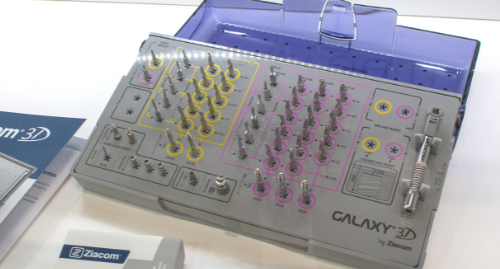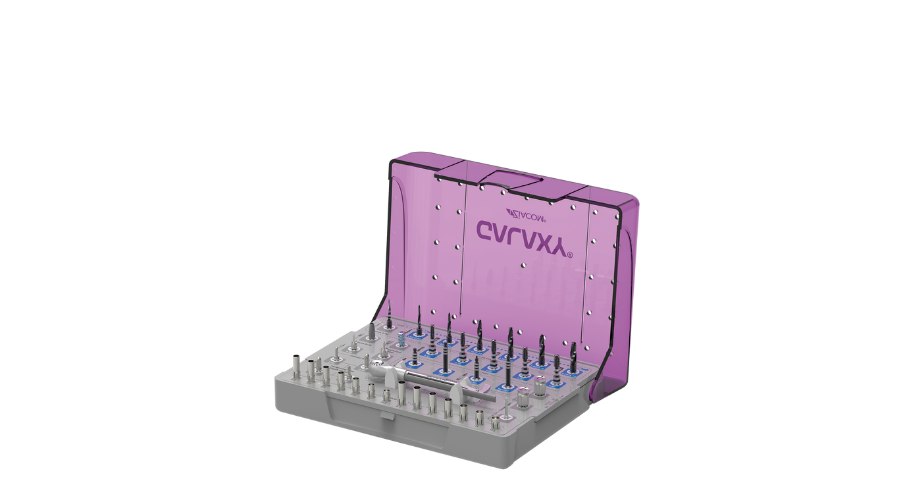The dental industry is in the process of expansion; demand has increased significantly in recent years and patients are demanding increased guarantees in their treatments. In line with the growth of the sector’s new needs, dental implantology is advancing day by day through digitalisation towards a complete digital workflow.
Digital impression systems, intraoral scanners, digital treatment planning, assisted surgery, design and elaboration of structures and solutions using CAD-CAM technology… The digital workflow and the progress within the dental sector have made it possible to improve the predictability of results in surgical procedures, as well as ensuring results that respond 100% to the patient’s needs.
The stages of the complete digital workflow
The full digital workflow in dentistry refers to the use of innovative and 100% digital technologies and processes in any type of dental procedure.
It aims to make tasks that previously had to be done by hand more efficient and avoid errors or inaccuracies that could have an immediate or long-term impact on the patient’s well-being.
Broadly speaking, the complete digital workflow in implant treatment consists of three fundamental stages:
- Digitalisation through digital impression taking and 3D radiological scanning. The doctor obtains a 3D digital file of the patient’s mouth that allows him to know in real time the necessary corrections to be made and thus reduce the number of clinical appointments.
- Digital surgical planning and computer-assisted surgical procedure. The development of computer-assisted surgery has marked a turning point in the world of implantology, achieving precise and accurate results in a truly short time.
- Guided surgery opens a world of possibilities in diagnosis and planning prior to implant surgery, making it an indispensable tool for professionals who wish to work safely, accurately and efficiently in their interventions.
- Production of the personalised prosthesis through virtual design. The digital workflow is complemented with the use of CAD-CAM technology for the design and production of prosthetic solutions. CAD-CAM technology has revolutionised oral implantology, allowing dental professionals to design structures and prosthetic solutions that were previously unachievable.
Ziacom Digital Workflow: the perfect combination to work the complete digital flow
With the aim to provide the professional with a complete system that allows him to develop the complete digital workflow, Ziacom digital workflow is based on the ideal combination of Ziacom® 3D and ZIACOR® CAD-CAM.
Guided surgery with Ziacom® 3D
The Ziacom® 3D guided surgery system provides clinicians with a simple, fast and precise guide to conduct the surgical procedure.
Ziacom® 3D offers the clinician the possibility to represent the exact position of the implants in 3D and to make an approximation of the result of the treatment before it is performed. In this way, the surgeon can predict and anticipate problems in order to guarantee a safe, fast and comfortable procedure for the patient, as well as minimally invasive and respectful of the biology of the tissues.
The use of surgical guidance also allows for predictable implant placement, simplifying surgery and significantly reducing time.
ZIACOR® CAD-CAM
The digital workflow is complemented with the use of CAD-CAM technology for the design and elaboration of prosthetic solutions.
CAD-CAM technology offers increased possibilities (software, scanners, 3D printers…), always focused on offering quality, precision and speed to both the professional and the patient.
For this purpose, Ziacom has joined forces with ZIACOR® CAD-CAM to create ZiaTestOne®, a process that uses the latest technology and allows the dentist to plan treatments comprehensively, optimise workflows and achieve precise, top-quality results even in the most complex cases.
The strengths of ZIACOM® digital workflow
Applying the complete ZIACOM® digital workflow, the doctor can guarantee the implantology process:
- Accurate diagnosis and precise results.
- Reducing time and clinical appointments.
- Minimally invasive procedure.
- Optimising pre-surgery planning.
- Safe, precise and efficient interventions.
- Reducing the possibility of error.
- Improvement in dentist-dental technician and dentist-patient communication.
- Maximum well-being for the patient.
- Increased predictability and treatment success.
- 100% personalised and customised design.




